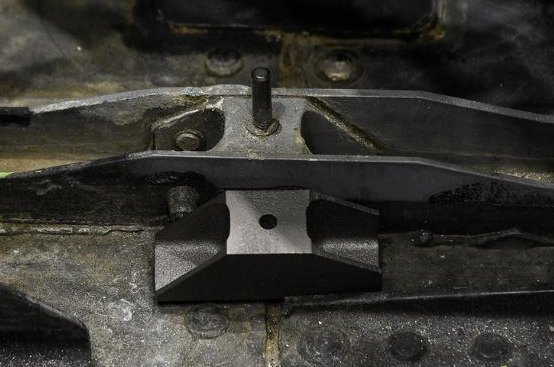A new metallic 3D printed part (bottom) is alongside the aluminum part to be replaced on an F-22 Raptor during depot repair Wednesday at Hill Air Force Base in Utah. The new titanium part will not corrode and can be procured faster and at less cost than the conventionally manufactured part. Photo by R. Nial Bradshaw/U.S. Air Force
Jan. 18 (UPI) -- A metallic 3D-printed part has been installed on an operational F-22 Raptor for the first time, which the Air Force hopes will lower costs and reduce maintenance time.
The new titanium part for the cockpit, which was installed by the 574th Aircraft Maintenance Squadron at Hill Air Force Base in Utah on Wednesday, replaces conventional aluminum ones, the Air Force said in a news release.
"One of the most difficult things to overcome in the F-22 community, because of the small fleet size, is the availability of additional parts to support the aircraft," Robert Lewin, 574th AMXS director, said in a statement.
The Air Force noted 3D printing allows for replacement parts on short notice without minimum order quantities.
The printed bracket, which won't corrode, is made from a titanium powder. In the fusion process, a laser builds the part layer by layer.
New brackets, which replace a corrosion-prone aluminum component in the kick panel assembly of the cockpit, can now be ordered and delivered to the depot in as soon as three days, the Air Force said.
"We had to go to engineering, get the prints modified, we had to go through stress testing to make sure the part could withstand the loads it would be experiencing -- which isn't that much, that is why we chose a secondary part," said Robert Blind, modifications manager at Lockheed Martin.
After success in service and maintenance inspection, the part will be installed on all F-22 aircraft during maintenance, the Air Force said.
"We're looking to go a little bit further as this part proves itself out," Blind said.
At least five more metallic 3D printed parts are planned for validation on the F-22.
"Once we get to the more complicated parts, the result could be a 60-70 day reduction in flow time for aircraft to be here for maintenance," Lewin said.
The Air Force is not the first branch to work with 3D printing to speed processes and reduce costs.
In 2017, a U.S. Marine Corps infantry battalion in Camp Lejuene, N.C., became the first unit in the Corps to possess a 3D printer, using it to print various pieces of equipment.
"We're at the tip of the iceberg as to what capabilities this can bring," Capt. Justin Carrasco, the logistics officer for the battalion, said at the time. "So right now, we're identifying different 3D-printed parts that can support the warfighter in the expeditionary environment."
The U.S. Marine Corps also tested small 3D-printed drones developed by the Army Research Laboratory.
Huntington Ingalls Industries also plans to install the first certified 3D-printed metal part on an aircraft carrier -- a prototype piping assembly -- on the USS Harry S. Truman this year.















